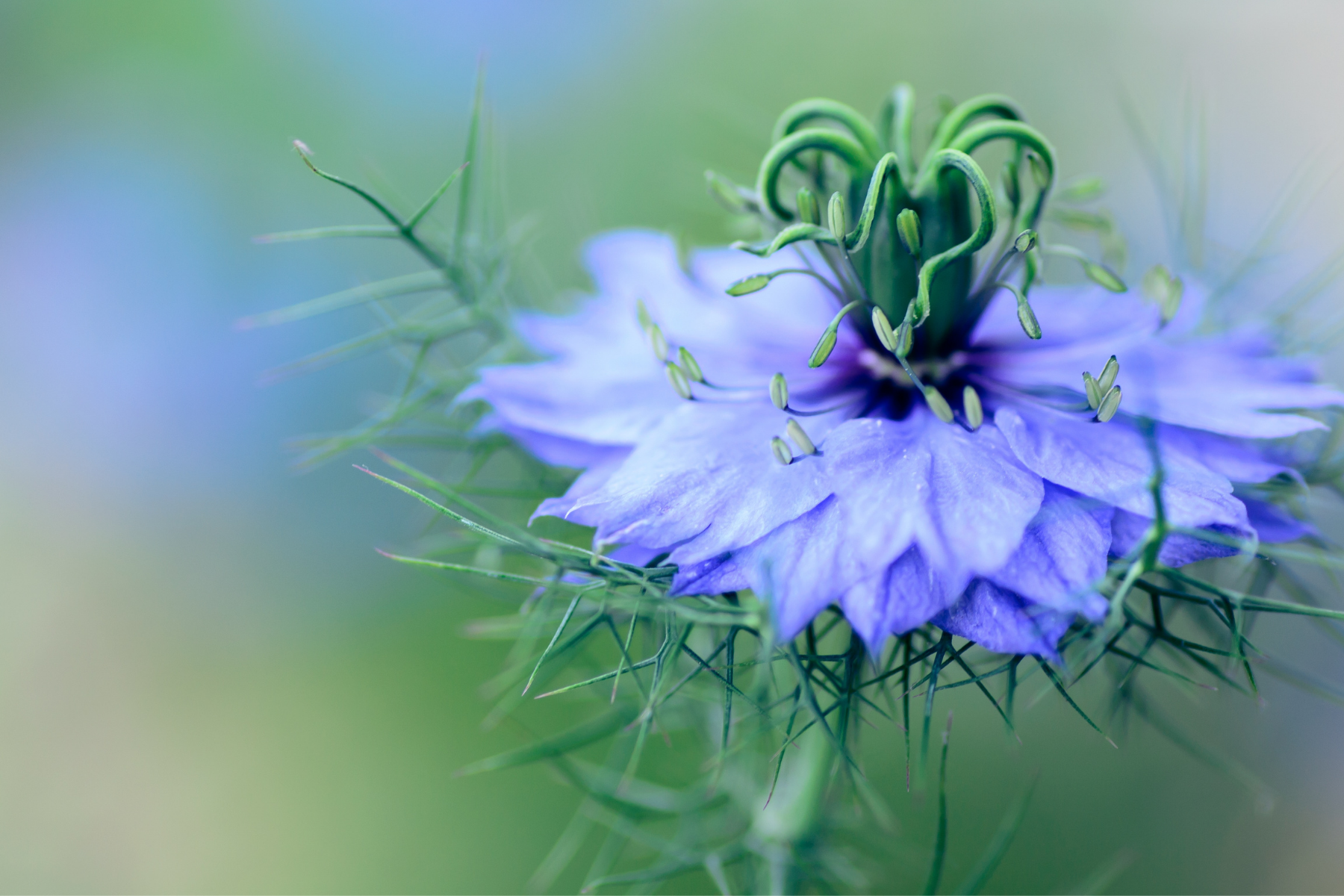Last Updated on April 12, 2024 by Real Men Sow
Nigella plant needs fertile and well-drained soil to grow into and needs either full sun or partial afternoon shade to thrive. During mild winters or in sheltered areas, seedlings sprouting in autumn may survive until spring comes.
The seedlings that sprout in early spring would easily survive light frosts. Make sure to keep the spacing of planting of plants 30cm away from each other.
How To Feed Nigella Plant?
When it comes to feeding, a light application of balanced organic fertilizer into the soil before planting would do the trick. In companions, light texture and soft colors of nigella can break up clashes between cornflowers and calendula.
Sowing and Planting Nigella Seeds
Sow seeds in prepared beds and gently press them into the surface. Keep moist until the seeds germinate. Because of their lacy foliage, nigella seedlings are easy to recognize among weeds. Nigella usually grows better from direct-sown seeds than from transplanted seedlings.
When Can You Grow Nigella Plant From Seed?
Because nigella flowers only for a few weeks it is best to sow seeds twice or three times between late spring and early summer. The most common flower colors are white, blue and pink.
Harvesting Nigella Plant
Many gardeners love to collect decorative dried seed pots to use in dry arrangements. Once the pods start to turn brown, cut them and hang them up in small groups to dry.
Troubleshooting
In very hot weather, Nigella plants can quickly decline. This flower can be self-sown in most gardens. – Lucky isn’t it?

